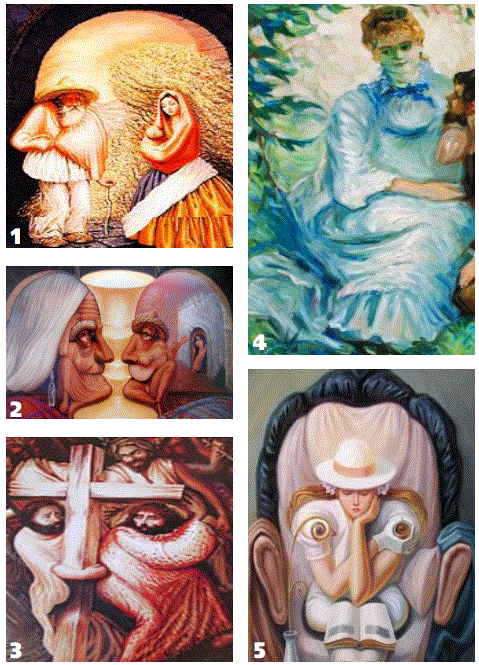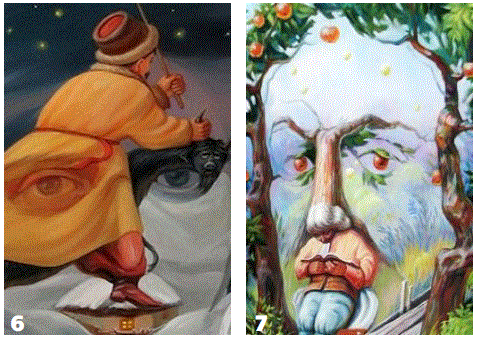Clinical Image
Unusual Different Images that form a Human Face
Emeritus Professor, Ben-Gurion University of the Negev, Israel
*Corresponding author: Abraham Tamir, Emeritus Professor, Ben-Gurion University, Israel, E-mail: atamir4@012.net.il
Received: November 18, 2018 Accepted: November 26, 2018 Published: January 4, 2019
Citation: Tamir A. Unusual Different Images that form a Human Face. Madridge J Intern Emerg Med. 2019; 3(1): 96-98. doi: 10.18689/mjiem-1000121
Copyright: © 2019 The Author(s). This work is licensed under a Creative Commons Attribution 4.0 International License, which permits unrestricted use, distribution, and reproduction in any medium, provided the original work is properly cited.
The face is a central organ of sense and is also very central in the expression of emotions. The face is normally found on the frontal surface of the head and is crucial for human identity. It consists of the following parts: The eyes, the nose, the cheeks, the extremely of which is the chin and the mouth. The face is a highly sensitive region of the human body and its expression may change when the brain is stimulated by any of the five senses: touch, smell, taste, hearing and visual stimuli as well as temperature. The muscles of the face play a prominent role in the expression of emotion, and vary among different individuals, giving rise to additional diversity in expression and facial features. The shape of the face is influenced by the bone-structure of the skull and each face is unique through the anatomical variation in the bones. In addition the face changes over time where facial shape is an important determinant of beauty, particularly facial symmetry. There are seven shapes of the face as follows that are detailed in Google address: “The seven face shapes- which one is yours? Salt Lake City St. George Beauty Examiner.com”. The oval face shape that is considered to be the ideal. The square face and the round face that are the most common. The triangle or pear shaped face that is most narrow at the forehead, and widest at the jaw line. The heart or inverted triangle shape, the oblong shape that is rectangular and the diamond shape that is not common.
In the eight figures, unusual faces are demonstrated that are composed of different unusual images.
The interesting fact is that at first glance a regular face is observed, however in-depth look an irregular face is revealed. This fact makes these paintings extremely creative artworks that demonstrate the process of perception of human’s brain. Figures.1, 2 and 3 were painted by the Mexican artist Octavio Ocampo born in 1943 were his artworks are characterized by the phenomenon that one painting hides more paintings. Figures 4-7 are artworks painted by the Russian optical illusion painter Oleg Shuplyak born in 1967. His artworks involve portraits of famous personalities drawn in such a way that common objects and scenery make up their distinctive faces in amalgamated form. Figure.4 demonstrates the French artist Pierre-Auguste Renoir who was a leading painter in the development of the Impressionist style. Figure.5 demonstrates the Spanish surrealist painter Salvador Dali best known for the striking and bizarre images in his surrealist work. Figure.6 demonstrates the Russian-French artist Marc Chagall whose paintings are characterized by a world of fantasy and dream. And Finally Figure.7 demonstrates the image of the English physicist Isaac Newton. In conclusion it may be said that although the faces are demonstrated from unusual different images, their composition in the form of a regular face will give the observer the impression of the regular face.

